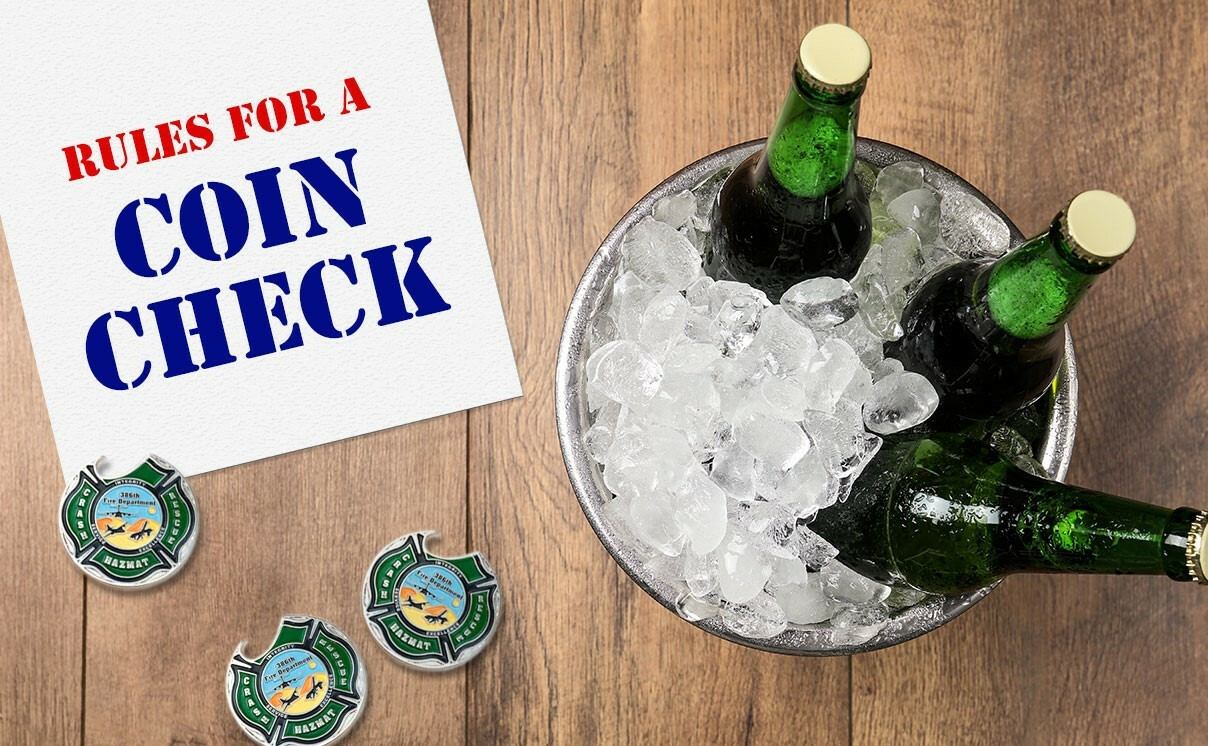
Learn the Challenge Coin Rules
A coin challenge is a fun way to promote camaraderie. But it pays to know the rules before you challenge.
Custom challenge coins have a time-honored place in military lore. They’re a cherished part of service for many, dating back, some say, to World War I. But what is the significance of receiving a challenge coin? And what are the rules for a coin check?
Significance of a Challenge Coin
Receiving a challenge coin in the U.S. military is an honor. It indicates an achievement. It may be completion of basic training, as with the Air Force’s Airman’s coin. Or it may be recognition for a job well done, or a service provided. You may receive a challenge coin from anyone above the rank of private, up to and including the Commander in Chief, which is a high honor indeed.
Challenge coins are of course, pieces of art. Yet their sentimental value often outweighs their simple appearance. They represent a specific time, place ang group of people with whom you serve. In light of that, there is a certain level of ritual assigned to them.
What Is a Coin Check?
A “coin check” is, as its name implies, a challenge to present a specific group’s challenge coins. A coin holder challenges the others present to produce their group’s coin. Those challenged must show their coins, or buy the next round of drinks. If all those challenge present their coins, the challenger must buy the next round. The playful challenge is a way to foster group camaraderie.
Rules of the Coin Check
The rules for a coin check vary between groups, and there are no set-in-stone universal rules. With military groups, there are certain expectations, generally as follows:
All coin check rules must be explained to new members so that they are not at a disadvantage.
Anyone in the group can initiate a challenge any time, anywhere. In a military setting, that includes the shower. Always remember to bring your coin wherever you go to be ready for a challenge at any time.
A challenger can initiate a challenge by either placing a coin in plain sight of a group of coin holders or by announcing it aloud.
When a coin check is called, the participants must display their coins quickly. The definition of “quickly” varies between groups. Some groups require the coin to be on the holder's person. Others have an allotted amount of space that a person can go to get their coin, say, an arm's length, or a certain amount of steps.
If those being challenged show coin according to the rules, the challenger must carry out their punishment. If the person challenged can’t show their coin, then they must follow through with their punishment. While “punishment” seems harsh, most of the time it entails footing the bill on a round of drinks.
As noted above, receiving a coin is an honor, one that requires taking proper care of the coin, including no defacing and no modifications. This is commonly expressed as “a coin is a coin.” If you turn it into a medallion, keychain or other item, it’s no longer a coin. A good rule of thumb is to keep your coin looking as close as possible to its original state when you received it.
Who Can Present Challenge Coins?
Anyone. You can order challenge coins for any event, achievement, or milestone. In the military, officers present challenge coins to enlisted personnel.
Even the Presidents of the United States have their own personal challenge coins to present. One of the highest honors for a U.S. Armed Forces member is to receive a challenge coin from their Commander in Chief. Traditionally, they are presented by the President to a select few.
How to Give a Challenge Coin
Awarding a challenge coin doesn’t require a formal ceremony. Giving a challenge coin is typically a very discreet process. When military organizations award coins, the process is done via handshake. The person awarding the coin holds their hand out to shake the recipient’s hand, and silently passes the coin on in the handshake.
Challenge coins represent ideals. Be sure to explain the importance of the coin rules for your group to anyone you award a coin to. The rules, coin checks and presentations help preserve an honorable tradition.